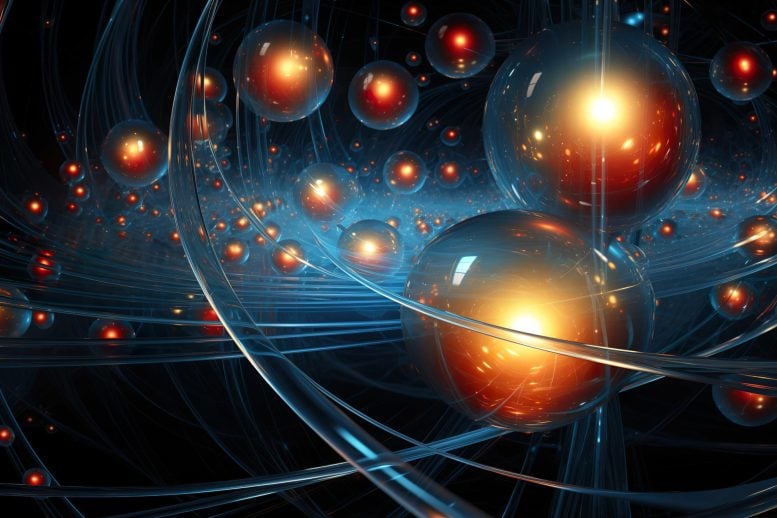
Researchers at Brown University have made strides in understanding quantum spin liquids, a complex state of matter. Contrary to standard magnets which solidify as temperatures decrease, quantum spin liquids remain in a state of flux. A recent study, focusing on the compound H3LiIr2O6, delved into the role of disorder in these materials. They found that the quantum liquid state doesn’t mimic or get destroyed by disorder but undergoes significant alteration. This research holds promise for quantum technologies, especially in the realm of quantum computing.
A study led by Brown University scientists begins to address a longstanding question in condensed matter physics on whether disorder mimics or destroys the quantum liquid state in a prominent compound.
Quantum spin liquids are difficult to explain and even harder to understand.
To start, they have nothing to do with everyday liquids, like water or juice, but everything to do with special magnets and how they spin. In regular magnets, when the temperature drops, the spin of the electrons essentially freezes and forms a solid piece of matter. In quantum spin liquids, however, the spin of electrons doesn’t freeze — instead the electrons stay in a constant state of flux, as they would in a free-flowing liquid.
Quantum spin liquids are one of the most entangled quantum states conceived to date, and their properties are key in applications that scientists say could catapult quantum technologies. Despite a 50-year search for them and multiple theories pointing to their existence, no one has ever seen definitive evidence of this state of matter. In fact, researchers may never see that evidence because of the difficulty of directly measuring quantum entanglement, a phenomenon Albert Einstein famously termed “spooky action at a distance.” This is where two atoms become linked and are able to exchange information no matter how far apart they are.
The Role of Disorder in Quantum Spin Liquids
The mystery around quantum spin liquids has led to major questions about this exotic material in condensed matter physics that have to this point gone unanswered. But in a new paper in Nature Communications, a team of Brown University-led physicists begins to shed light on one of the most important questions and does so by introducing a new phase of matter.
It all comes down to disorder.
Kemp Plumb, an assistant professor of physics at Brown and senior author of the new study, explains that “all materials on some level have disorder” and that disorder has to do with the number of microscopic ways components of a system can be arranged. An ordered system, like a solid crystal, has very few ways to rearrange it, for instance, while a disordered system, like a gas, has no real structure to it.
In quantum spin liquids, disorder introduces discrepancies that essentially butt heads with the theory behind the liquids. One prevailing explanation was that when disorder is introduced, the material ceases to be a quantum spin liquid and instead is simply a magnet that’s in a state of disorder. “So, the big question was whether the quantum spin liquid state survives in the presence of disorder, and if it does survive, how?” Plumb said.
The researchers addressed the question by using some of the brightest X-rays in the world to analyze magnetic waves in the compound they studied for tell-tale signatures that it’s a quantum spin liquid. The measurements showed that not only does the material not magnetically order (or freeze) at low temperatures, but that the disorder that’s present in the system doesn’t mimic or destroy the quantum liquid state.
It does significantly alter it, they found.
“The quantum liquid state sort of survives,” Plumb said. “It doesn’t do what you would expect a normal magnet to do where it just freezes. It stays in this dynamic state, but it’s like a de-correlated version of that dynamic state. Our interpretation right now is the quantum spin liquid is broken up into little puddles throughout the material.”
Implications and Future Research
The findings essentially suggest that the material they looked at, which is one of the prime candidates to be a quantum spin liquid, does appear to be close to one, yet with an additional component. The researchers posit that it’s a quantum spin liquid that is disordered, making it a new phase of disordered matter.
“One thing that could have happened in this material was that it becomes a disordered version of a non-quantum spin liquid state, but our measurements would have would have told us that,” Plumb said. “Instead, our measurements show that it’s something very different.”
The results deepen our understanding of how disorder affects quantum systems and how to account for it, which is important as these materials are explored for use in quantum computing.
The work is part of a long line of research on exotic magnetic states from Plumb’s lab at Brown. The study focuses on the compound H3LiIr2O6, a material considered to best fit the archetype for being a special type of quantum spin liquid called a Kitaev spin liquid. Though known not to freeze at cold temperatures, H3LiIr2O6 is notoriously difficult to produce in a lab and is known to have disorder in it, muddying whether it was truly a spin liquid.
The researchers from Brown worked with collaborators at Boston College to synthesize the material and then used the powerful X-ray system at the Argonne National Laboratory in Illinois to zap it with high-energy light. The light excites the magnetic properties in the compound, and the measurements that come from the waves it produces are a workaround for measuring entanglement because the method offers a way of looking at how light influences the entire system.
The researchers hope to continue to expand on the work by refining methods, the material itself, and looking at different materials.
“The biggest thing going forward is something that we’ve been doing, which is continuing to search the really vast space of materials that the periodic table gives us,” Plumb said. “Now we have a deeper understanding of how the different combinations of elements that we put together can affect the interactions or give rise to different kinds of disorder that will affect the spin liquid. We have more guidance, which is really important because it truly is a really vast search space.”
Reference: “Momentum-independent magnetic excitation continuum in the honeycomb iridate H3LiIr2O6” by A. de la Torre, B. Zager, F. Bahrami, M. H. Upton, J. Kim, G. Fabbris, G.-H. Lee, W. Yang, D. Haskel, F. Tafti and K. W. Plumb, 18 August 2023, Nature Communications.
DOI: 10.1038/s41467-023-40769-x
Other authors from Brown include Alberto de la Torre Duran, a former postdoctoral fellow in the Plumb lab, and Ben Zager, a current graduate student. This work was supported by the U.S. Department of Energy, which operates the Argonne National Laboratory.

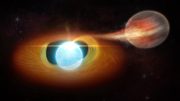



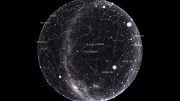
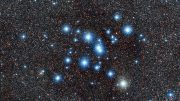
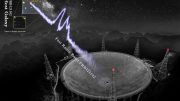
Be the first to comment on "A New Phase of Matter – Researchers Detail How Disorder Alters Quantum Spin Liquids"